Public health experts answer: How would we handle another flu pandemic?
May 15, 2018
Early detection, rapid response save lives
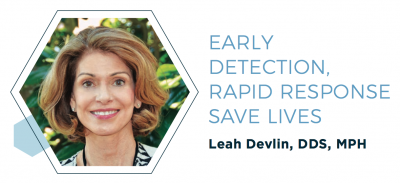 Early detection and rapid response save lives! This is the underlying principle for handling a flu pandemic on the scale of the 1918 event and is a fundamental responsibility of the state and local health departments working with the CDC and many other partners.
Early detection and rapid response save lives! This is the underlying principle for handling a flu pandemic on the scale of the 1918 event and is a fundamental responsibility of the state and local health departments working with the CDC and many other partners.
Early detection and rapid response require that every county, state and the federal government implement their strong, well-rehearsed pandemic flu plans with their community partners.
First, a strong, ongoing surveillance system, supported by laboratory testing, would identify early a novel, seriously harmful influenza virus being transmitted to humans and sustained in the population. Interrupting this transmission would be essential. Therefore, isolation of ill patients and quarantine of their contacts would follow immediately.
Community strategies to interrupt transmission would include voluntary home isolation for individuals who are ill, implementation of stronger hand hygiene and respiratory etiquette, voluntary quarantine of well individuals in their homes, routine use of face masks, and closures of child-care centers and schools. Businesses would curtail their activities according to their own pandemic flu mitigation plans.
In support of the health care system, we would need to implement continual monitoring of the surge capacity needs of hospitals and deploy the Strategic National Stockpile (see cdc.gov/stockpile) to provide Tamiflu, masks and other “countermeasures.”
We would issue health care providers additional treatment, prevention and infection control guidelines. If an effective vaccine is available, we would assess and manage its use to achieve maximum benefit, with aggressive public awareness campaigns providing outreach.
An effective risk communications effort using all types of media and hotlines would provide the public timely, accurate and complete information as the pandemic progresses, peaks and eventually wanes.
We would continue heightened surveillance so we could monitor aggressively any possible reemergence of a second wave of influenza. As the community recovers, having demonstrated its resiliency in a time of high risk and concern, we would develop an “after action” evaluation so that the collective response to protect the public’s health can be even stronger the next time we face another pandemic.
Devlin is Professor of the Practice in health policy and management at the Gillings School and a former North Carolina State Health Director.
We can’t wait for an epidemic to happen
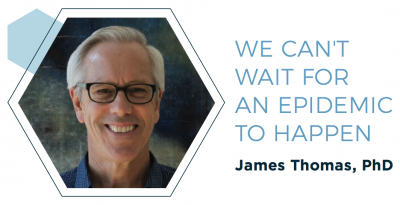 The most important thing about responding to an epidemic is not to wait for it to happen.
The most important thing about responding to an epidemic is not to wait for it to happen.
If a population is not prepared when an epidemic starts – especially with something as infectious and deadly as the 1918 influenza – then, the outbreak may run its full course before health workers catch up.
Although we have vaccines and medications now that weren’t available in 1918, it will take months to develop a vaccine for the new pandemic strain, and antiviral medications are too expensive and short-lived to stockpile for a whole population. While we wait for the silver bullets, infection will spread.
There are things we can do to prepare for that early phase. Here are three:
- When your neighbor may be a risk to you, fear and panic can take over. The media can appeal to fear or calm it. Public health officials can build bridges with the media now to help ensure the latter.
- Those who don’t speak English may miss public communications about steps to take. Some who don’t speak English are undocumented and afraid of interacting with officials. We can develop means of safely providing them information and services – for their own health and to lessen the sources of infection for others.
- We cannot anticipate every challenge, and virtually every decision potentially will hurt someone. We can practice on-the-ground ethical decision-making in the midst of a crisis.
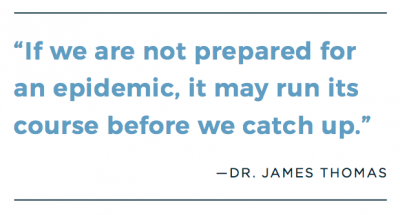 In public health, we face the problem of zero. Getting case numbers low is our measure of success. Keeping them low takes sustained effort, but governments often move resources away from the low numbers. Likewise, the general public pays attention to crises rather than quietude. Our greatest challenge for the next pandemic is to prepare while the numbers are still low.
In public health, we face the problem of zero. Getting case numbers low is our measure of success. Keeping them low takes sustained effort, but governments often move resources away from the low numbers. Likewise, the general public pays attention to crises rather than quietude. Our greatest challenge for the next pandemic is to prepare while the numbers are still low.
Thomas is an associate professor of epidemiology at the Gillings School and director of the Carolina Population Center’s MEASURE Evaluation Project. A principal author of the American Public Health Association’s “Code of Ethics,” Thomas leads a global team that advances the capacity of developing countries to monitor their epidemics and evaluate their programs to control them.
Our response must be data-driven
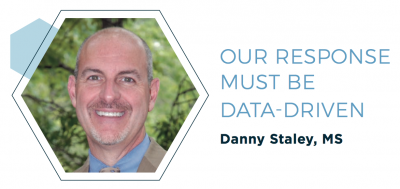 In 1918, little was known about viruses and too little about diseases. Surveillance equaled body counts. Today, we have more advanced ways of collecting and using data to prevent and respond to influenza outbreaks.
In 1918, little was known about viruses and too little about diseases. Surveillance equaled body counts. Today, we have more advanced ways of collecting and using data to prevent and respond to influenza outbreaks.
A key data source is active surveillance, which gives us data such as types of viruses in circulation, geographic distribution and influenza-associated deaths. Information collected locally is provided to the Centers for Disease Control and Prevention (CDC) and World Health Organization (WHO). These organizations use data to guide prevention activities and formulate vaccines.
North Carolina engages untiringly in active surveillance. Local health departments, private practitioners, colleges and universities, and hospitals submit lab specimens to the State Laboratory for Public Health. Results that are generated allow for earlier detection and targeted response of prevention activities, including vaccination clinics, clinical interventions and media campaigns.
The North Carolina Disease Event Tracking and Epidemiologic Collection Tool (NC DETECT) uses data sources, including hospital emergency departments, to monitor influenza-like illnesses. NC DETECT data allow for analysis of trends and comparisons to previous years.
Today, we have data systems and access in place to allow public health practitioners to achieve early detection and rapid response. This is especially important in the case of a novel influenza virus. Knowing we are dealing with a novel influenza can inform our actions, perhaps directing us to deploy the Strategic National Stockpile or giving us a head start on vaccine development.
Data give us a foundation for compiling guidance documents to establish standards and protocols. Data allow us to communicate effectively about prevention and reduction in the spread of disease. Data capture the drifts and shifts in viruses, allowing us to be agile in devising prevention and treatment strategies.
Our response to a modern-day pandemic of flu? It should – and must – be data-driven.
Staley has served as director of North Carolina’s Division of Public Health since 2015. Past president of the N.C. Association of Local Health Directors, he has presented to legislative committees on various public health challenges, including obesity, tobacco use prevention and public health infrastructure.
Communication will play a critical role
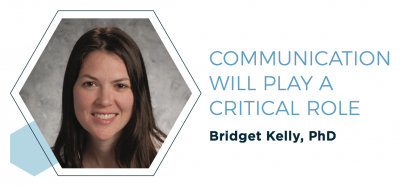 During the 1918 flu pandemic, the communication environment was simpler. There were no text-message alert systems, no internet for Googling symptoms, no 24-hour news cycle. In some states, mail carriers delivered the latest educational materials about the outbreak.
During the 1918 flu pandemic, the communication environment was simpler. There were no text-message alert systems, no internet for Googling symptoms, no 24-hour news cycle. In some states, mail carriers delivered the latest educational materials about the outbreak.
While medical and scientific advances may save us from enduring again the severity of the 1918 pandemic, communication could play a critical role in reducing transmission. The speed with which we can reach mass audiences will lessen the pandemic’s impact, but we also have learned a lot about what works and what doesn’t in communication during outbreaks.
The most brilliantly crafted public health messages can help only if they reach their target audiences, and no message will be effective if it conflicts with people’s beliefs. Advance research to better understand belief systems of the different audience segments can maximize a message’s potential. For example, understanding the beliefs of those resistant to vaccines could help to prevent the hampering of vaccination efforts when a pandemic occurs.
The Centers for Disease Control and Prevention has published extensive guidelines on crisis and emergency risk communication. These include:
- Instill trust by communicating early, often and as transparently as possible.
- Communicate uncertainty by preparing the audience for the likelihood that information will change as new facts are learned.
We also have learned how to develop more accessible communication products, factoring in literacy, health literacy and cultural appropriateness. See plainlanguage.gov and the CDC Clear Communication Index (cdc.gov/ccindex/index.html).
In applying these lessons, we must remember that the public’s attention to issues in the news is ephemeral. If people hear too much hyperbole at the start of an outbreak, we can lose them before that critical time when we most need them to pay attention.
Battling misinformation is a challenge. Social media potentially can be used for stigmatization, conspiracy theories and proliferation of myths. This unfortunate situation warrants careful media-monitoring during epidemics.
We do not know when, or from where, the next pandemic will arise. When it does, we must apply lessons learned from past epidemics to plan our most effective communication efforts.
Kelly is a health communication research scientist at RTI International, where she is program manager for RTI’s Science in the Public Sphere program. Kelly studies communication processes during infectious disease outbreaks and has worked on projects involving H1N1 influenza, Zika virus, Ebola and preparedness for pandemic flu.
Carolina Public Health is a publication of the University of North Carolina at Chapel Hill Gillings School of Global Public Health. To view previous issues, please visit sph.unc.edu/cph.
